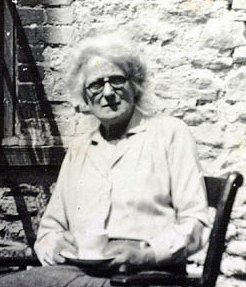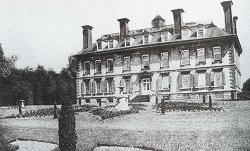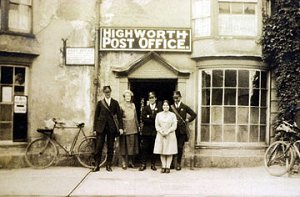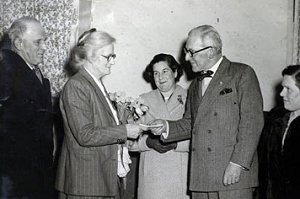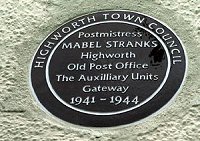|
|||||||||
Mabel Stranks on the BBC
War-time hero remembered on BBC's 'The One Show'
The postmistress became an essential part of Winston Churchill's secret Auxiliary Unit from her position in Highworth's high street, where she security checked all trainees.
Helping to organise the training of over 2,000 men at the secret location at Coleshill House, Mabel played a significant part of the highly-secret campaign from 1940 to 1944.
Coincidentally this was all happening just minutes away from Sevenhampton, where Bond creator Ian Fleming wrote some of his greatest stories.
We look back at her history...
The Secret Life of Mabel Stranks
Swindon's real-life secret agent
Although Swindon has connections with the world's most famous fictional spy, James Bond, it is the real life story of Mabel Stranks that is the more remarkable link with world of espionage.
A story that has only recently been recognised with the unveiling of a plaque above the old post office in Highworth.
Mrs Stranks was Highworth's Postmistress and the dependable face of village life who sorted the stamps and telegrams for over 25 years. What no one knew, not even her close family, was that during the war years, 1941-45, this grey haired woman played a key role in a guerrilla army established by Winston Churchill and became a name on the hit-list of Hitler himself.
Her unlikely involvement started after the Dunkirk evacuation in 1940 when Churchill ordered the setting up of a crack resistance movement in the UK that would counter any German invasion. This involved the recruitment of Peter Fleming, brother of Ian Fleming, the author of the James Bond novels, and Michael Calvert, the man who went onto set-up the SAS, to organise this special unit and to train them in the art of specialised resistance fighting.
Coleshill House was aptly renamed the 'Auxiliary Gateway'.
Fleming and Calvert knew that their entire operation would be compromised if anyone found out what was going on at Coleshill House. They needed complete secrecy and a different address. And this is where the trustworthy and unassuming Mabel Stranks came in. The Post Office was a perfect 'go-between' with strangers visiting all the time and the postmistress known for her unassuming nature and discretion.
When they arrived, they would ask for Mrs Mabel Stranks, give a password and be told to wait. Mabel would then go into her office and make a series of phone calls (very often making visitors wait for hours).
A car would then arrive and those 'screened' as official by Ms Stranks driven to the Auxiliary Gateway by the most indirect route.
Those suspected by Mabel of being 'unofficial' were taken elsewhere.
Some 3,000 civilians were recruited by Auxiliary Units and despatched to Highworth Post Office - all of whom had to pass what came to be known as the 'Stranks test'. After arriving at Coleshill they were then trained to do everything from blowing up bridges to slitting throats. They were even taught how to booby trap toilets in the grand country houses that the German heirachy would no doubt have taken over had they invaded.
The bravery of Mrs Stranks cannot be underestimated when one considers that the life expectancy of any of those involved in the Coleshill operation was just 10 days, and that she herself was all too aware of the reprisals that had been meated out by the Germans to the French resistance fighters. In fact, what is equally remarkable is she never accepted recognition for her part in this secret operation and never spoke of her experiences until her death in 1971 at the age of 88, three years after her involvement was brought to light in the book 'The Last Ditch'. Following the book's publication she was asked to take part in a documentary about Auxiliary Unit but declined.
Coleshill House burned down in 1952 but some of the secret bunkers still remain, the estate itself owned and run by the National Trust. Every year an 'Open Day' for the Coleshill village includes a guided tour of the 'Auxiliary Unit' story.
So, although it took over 60 years to recognise the contribution made by Mrs Mabel Stranks there is now a lasting memorial to an extraordinary lady and the 3000 brave men and women whose first contact with the 'Auxiliary Unit' was the 'Auxiliary Gateway' c/o Highworth Post Office. |
|||||||||
|
||||||||
| British Resistance Archive - website | ||||||||





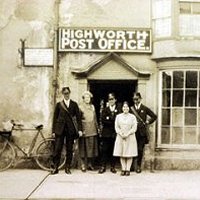
 BBC iPlayer - watch clip
BBC iPlayer - watch clip